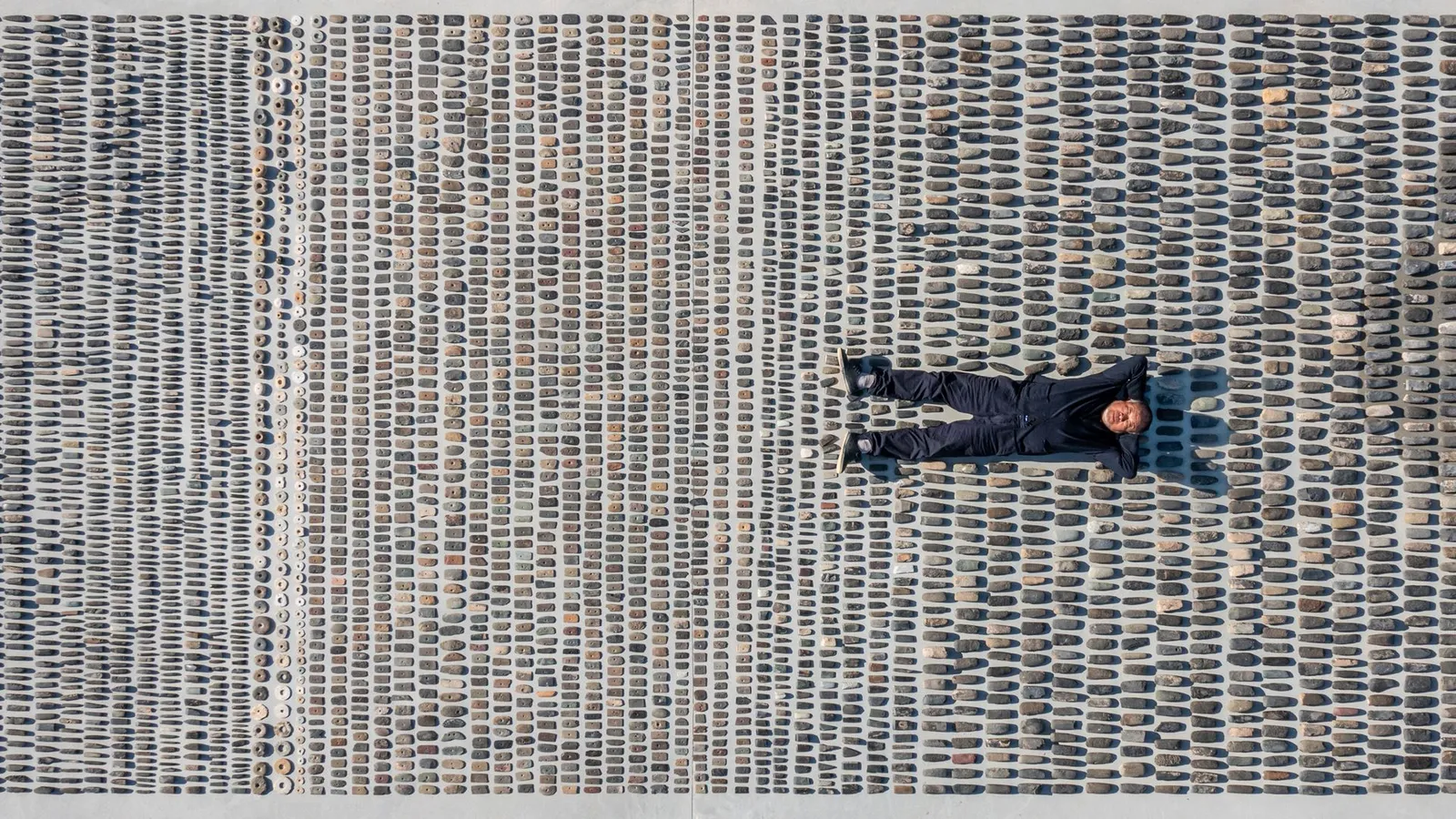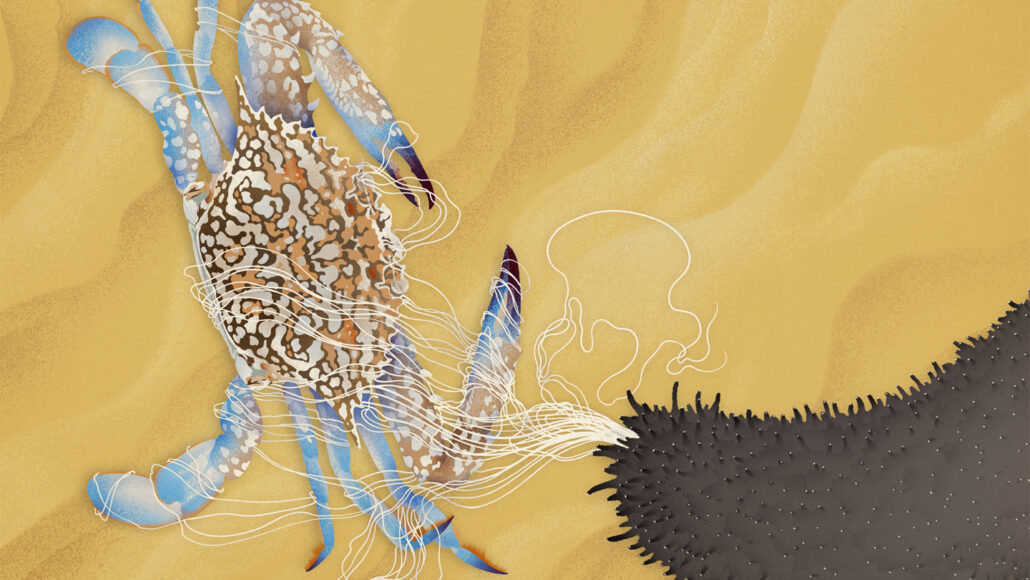This tiny robot could 3D print inside your body to make repairs and fight cancer
這個微型機器人可以在你的身體內進行3D列印以進行修復和抗癌
Health
Scientists in Australia have developed a small flexible robot that could 3D print biomaterials directly inside the human body to repair damaged organs, tissues and blood vessels. This could be a game-changer as the current process of creating biomaterials outside the body and then relying on surgery to insert them can lead to high blood loss and infections. "Currently, no commercially available technology can perform direct 3D printing inside the human body," said Dr. Thanh Nho Do, Director of the University of New South Wales Medical Robotics Lab.
--from Euronews
澳大利亞科學家開發出一款非常靈活的小型機器人,它可以直接在人體內列印出3D的生物材料,以修復受損器官、組織及血管。這可能會改變現有的生物科技趨勢,因為現有的科技是在人體外製造生物材料再以手術將其移植進入人體,植入的過程可能會導致大量失血和感染。 新南威爾斯大學(University of New South Wales, Sydney)醫學機器人實驗室主任 Thanh Nho Do 博士說:「目前還沒有任何商用技術可以在人體內直接進行3D列印。」
--摘錄翻譯自Euronews
Why you keep having the same dream
為何總是做同樣的夢
Health
For years, dreams of my teeth cracking, loosening or falling out plagued my sleep. Loved ones of mine have repeatedly dreamed of flying, rolling away in a self-operating car, or running late for school or work. These aren’t typical nightmares, which usually happen once. They’re some of the most common recurring dreams, which tend to lean negative and can take some work to overcome. “Recurring dreams are likelier to be about very profound life experiences or just very character logic issues that are kind of guaranteed to recur in waking life because they’re part of you rather than a one-time event,” said dream researcher Deirdre Barrett, a lecturer of psychology in the department of psychiatry at Harvard Medical School.
--from CNN Health
多年來,夢見我的牙齒裂開、鬆動或脫落這些事一直出現在夢境中干擾著我的睡眠。我的親人們曾重複夢見自己在飛行、從自動駕車中滾落、上學或上班遲到。這些都不是典型的噩夢,噩夢往往只會只發生一次。它們是一些最常見且反復出現的夢境,往往使人們變得消極,且需要費一番功夫才能擺脫。「反復出現的夢境更可能是與深刻的生活經歷相關,或只是非常個人化的邏輯問題,在清醒的生活中肯定會再次出現,因為它們是你的一部分,而不是一次性事件。」夢境研究者,哈佛醫學院精神病學系的心理學講師Deirdre Barrett說道 。
--摘錄翻譯自CNN Health
The Symbol of Easter: The Easter Bunny
復活節的象徵:復活節兔
Culture
Easter is a Christian festival that celebrates the resurrection of Christ after his crucifixion on Good Friday. And yet everywhere we see it symbolised by a floppy-eared, bucktoothed, and egg-dispensing lagomorph. Where exactly did the Easter Bunny tradition derive from? Coming up with an answer is not as easy as it may appear – the hunt will take us down a few rabbit holes, not unlike Alice on her voyage through Wonderland. Three rabbity themes cut across global mythology and religion: bunnies' perceived sacredness, their mystical link to the moon, and their connection with fertility.
--from BBC Culture
復活節是一個基督教節日,慶祝耶穌基督在受難日受難後復活。然而,復活節的象徵卻是一隻耳朵下垂、長著齙牙,還會生蛋的兔子。復活節兔這個傳統究竟從何而來?要想得出答案並不如表面上看起來那麼容易—此趟旅程將帶我們進入多個「兔子洞」(未知的世界),與愛麗絲穿越夢仙境的旅程有幾分相似。在全球各地的神話和宗教中對兔子的描述有三個共同點:兔子被認為是神聖的、它們與月亮之間的神秘關係,以及它們與生育能力的聯結。
--摘錄翻譯自BBC Culture
Ai Weiwei interview
艾未未專訪
Culture
Ai Weiwei is one of the best-known artists alive today. But asked recently when he first realised he wanted to be an artist, he responded: "Do I really want to be an artist? I'm still undecided." For anyone who has followed the Chinese contemporary artist-and-activist's 45-year-long career, such a response is unsurprising. While Ai has spent decades pushing the boundaries of art, questioning the practices of several institutions, and bringing social issues to the fore, he has always also offered a sense of provocation and humour.
--from BBC Culture
艾未未是當今最知名的藝術家之一。 但當被問及他是什麼時候意識到自己想成為一名藝術家時,他回答道:「我真的想成為一名藝術家嗎?我還尚未決定。」對於任何長期關注這位職業生涯長達45年的中國當代藝術家和社運人士的人來說,這樣的反應不足為奇。 幾十年來,雖然艾未未致力於突破藝術的界限、質疑多個機構的現行做法,並將社會問題置於首位,但在他的作品中也總有一股刺激與幽默感。
--摘錄翻譯自BBC Culture
‘Natural buffer’: Could this tiny red crab help protect the Great Barrier Reef?
天然緩衝物:這種小紅蟹有助保護大堡礁嗎?
Sciences
The Great Barrier Reef is one of the natural wonders of the world.But many of its reef-building corals have been devoured by plagues of toxic crown-of-thorns (COTS) starfish. Scientists fighting to save the Great Barrier Reef have discovered a new secret weapon - a tiny red crab. The red decorator crab - or ‘Schizophrys aspera’ - has a voracious appetite for the juvenile starfish, research from the University of Queensland has shown. University of Queensland researchers tested the appetite of more than 100 species of crabs, shrimps, worms, snails, and small fish. The lead researcher and PhD candidate Amelia Desbiens said “The red decorator crab was by far the most consistent predator consuming COTS in 89 per cent of the feeding trials. It’s one of the best predators of COTS we’ve seen and could be a natural buffer against future outbreaks on the reef.”
--from Euronews
大堡礁是世界自然奇觀之一。但它的許多造礁珊瑚已被有毒的棘冠海星 (COTS) 海星吞噬。為拯救大堡礁而奮鬥的科學家們發現了一種新的秘密武器—一種小紅蟹。昆士蘭大學的研究顯示,紅色裝飾蟹(或稱Schizophrys aspera粗甲裂額蟹)對幼小海星有著深不見底的胃口。昆士蘭大學的研究人員測試了100多種螃蟹、蝦、蠕蟲、蝸牛和小魚的食慾。首席研究員兼博士候選人Amelia Desbiens說:「在 89%的餵養試驗中,紅裝飾蟹是目前為止最穩定的捕食者。牠是我們所見過的最佳COTS捕食者之一,可能成為對抗未來珊瑚礁危機爆發的天然緩衝。」
--摘錄翻譯自Euronews
This Sea Cucumber Shoots Sticky Tubes Out of Its Butt. Its Genes Hint at How
此海參自尾部發射黏管,它的基因暗示該機制。
Sciences
Some startled sea cucumbers shoot a silky — and sticky — substance out of their rear ends that is actually an entire organ. The tangle of tubules looks like intestines, and, like lizard tails, it regenerates after use. The tangle of tubules looks like intestines, but it evolved from the invertebrates’ respiratory system, and, like lizard tails, it regenerates after use. In a new study in the April 10 Proceedings of the National Academy of Sciences, researchers delved into the black sea cucumber’s genome to see how the stringlike tubules, called the Cuvierian organ, work at the molecular level. The team predicted what proteins would be made from Cuvierian organ genes using a program called AlphaFold. Some unexpected predicted proteins were new types of receptors on cells’ surfaces that may play a role in expelling the organ. The organ’s stickiness — which stops sea cucumber predators in their tracks — comes from proteins that have features similar to amyloids. Amyloids are associated with many diseases in humans, including Alzheimer’s.
--from Science News (article with video)
有些受驚的海參會從它們的尾部發射一種絲狀的粘稠物質,此物質其實是一個完整器官。糾結的小管看起來像腸子,且如蜥蜴的尾巴般,使用後會再生。4月10日美國國家科學院院刊的一項新研究中,研究人員深入研究了黑海參的基因組,以了解名為朱維爾氏器的弦狀小管如何在分子等級作用。該團隊使用稱為AlphaFold的程式預測朱維爾氏器基因會製造哪些蛋白質。一些出乎預料的蛋白質為可能在排出此器官時扮演重要角色的細胞表面之新型受器。該器官的粘性來自具有類澱粉蛋白特徵的蛋白質,可阻止海參獵捕者。類澱粉蛋白與人類的許多疾病有關,包括阿茲海默症。
--摘錄翻譯自Science News(原文含影片)
